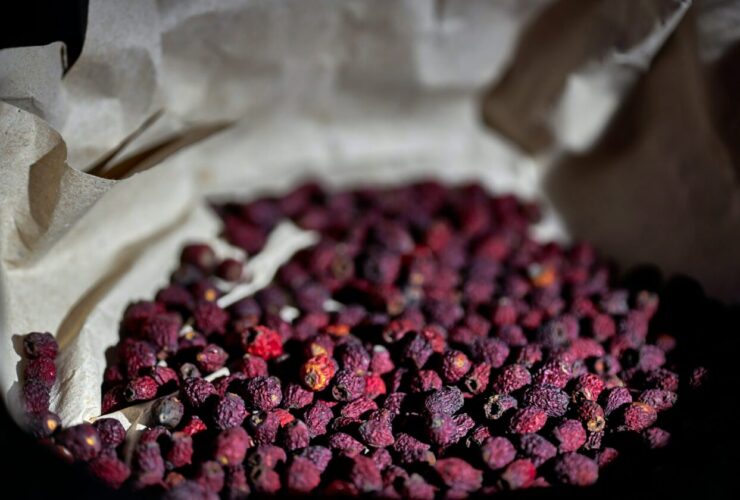The ketogenic diet, sometimes known as the “keto” diet, has been trendy recently because of its potential advantages for managing specific health issues, promoting weight loss, and increasing energy levels. This high-fat, low-carb diet aims to put the body into ketosis when it burns fat rather than carbs for energy. However, managing the intricacies of the ketogenic diet necessitates paying close attention to the meals and components taken. Cream of tartar is one such substance that is frequently questioned in the keto community. The relationship between the cream of tartar and the ketogenic diet is examined in this article.
Understanding the Keto Diet
It’s essential to comprehend the basics of the ketogenic diet before getting into the details of the cream of tartar. The main goals of the keto diet are to consume significantly less carbohydrates, more healthy fats, and moderate amounts of protein. By doing this, the body creates ketones from fat reserves to power cellular processes, putting it in a metabolic condition known as ketosis. Numerous possible advantages of this change in metabolism include better blood sugar regulation, weight loss, and increased mental clarity.
Is Cream of Tartar Keto Friendly?
Potassium bitartrate, also known as cream of tartar in science, is a staple in baking and cuisine. It is frequently commended for its high potassium content and adaptability in culinary applications. It is a byproduct of winemaking. So, how does a cream of tartar fit into a ketogenic diet?
Yes, a cream of tartar is suitable for keto. Because of its low carbohydrate content, it is appropriate for a ketogenic diet. It also has a high potassium content, which supports electrolyte balance during ketosis. But it’s crucial to use cream of tartar sparingly and look for additional sugars in packaged goods. Adding Cream of Tartar to keto meals can safely improve flavor and texture while still helping you reach your nutritional objectives.
Nutritional Profile: Cream of tartar is a good choice for people on a ketogenic diet because it contains comparatively few carbs. It falls nicely within keto dieters’ suggested daily carbohydrate allowance, with only 1.8 grams of net carbs per teaspoon.
Potassium Content: The high potassium content of the cream of tartar is one of its main advantages for keto fans. Potassium is necessary to keep electrolyte balance stable, which might be upset in the early phases of entering ketosis. Consuming enough potassium can help avoid the “keto flu” symptoms, including heart palpitations, exhaustion, and muscle cramping.
Versatility in dishes: Cream of tartar works well in a wide range of keto-friendly dishes, such as homemade play dough, baked goods, and desserts. It’s a valuable component in low-carb baking because it can solidify egg whites and prevent sugar from crystallizing.
Considerations and Recommendations
Although adding cream of tartar to a ketogenic diet can be advantageous, there are a few things to keep in mind:
Portion Control: When using the cream of tartar in keto recipes, moderation is crucial, just like with any other ingredient. Despite having little carbohydrates, taking too much of it may result in an excessive consumption of calories.
Additional Sugars: It’s essential to look for additional sugars or fillers in commercial cream of tartar products as they could make them less keto-friendly. Go for unadulterated, pure cream of tartar powder.
Individual Tolerance: Certain components, such as cream of tartar, may cause greater sensitivity in some people. If you have any adverse reactions or stomach pain, you should cut back on or stop using it in your recipes.
Conclusion
In conclusion, because of its high potassium concentration and low carbohydrate content, a cream of tartar might be considered keto-friendly. When used sparingly, it can improve the flavor and texture of keto-friendly foods and help maintain electrolyte balance during the ketogenic transition. You can reap the benefits of cream of tartar while adhering to your keto objectives if you know its nutritional composition and use it sparingly in your meals.
References
Wikipedia Contributors. Potassium bitartrate. Wikipedia. https://en.wikipedia.org/wiki/Potassium_bitartrate
Lang, A. What Is Cream of Tartar? Benefits, Uses, and Side Effects. Healthline. https://www.healthline.com/nutrition/cream-of-tartar-benefits
FoodData Central. Usda.gov. https://fdc.nal.usda.gov/fdc-app.html#/food-details/175041/nutrients
Your Guide to Cream of Tartar, the Oft-Overlooked Essential Baking Ingredient. Simply Recipes. https://www.simplyrecipes.com/what-is-cream-of-tartar-5213161
Was this helpful?

Joseph Emb, RDN
Founder of StyleVitally.com | Registered Dietitian & Wellness Advocate
What I Cover:
I’m passionate about connecting nutrition science and everyday wellness to help people live healthier, more vibrant lives. I write about evidence-based nutrition, mindful eating, sustainable lifestyles, and holistic well-being at StyleVitally.com.
My Background:
The University of Texas in Austin, where I earned my Dietetics diploma, laid the groundwork for my nutrition and health career. My training and hands-on experience taught me the science and art of using nutrition to enhance health and well-being.
Professional Journey:
I’m an RDN with lots of experience. I’ve helped people seeking tailored nutritional recommendations in clinical settings and community outreach programs. My constant learning and professional development ensure that my recommendations are always based on the latest evidence.
Ethical Commitment:
My practice prioritizes integrity. My content is transparent and objective, following the most significant ethical standards. I can give my audience unbiased advice because I’m not affiliated with food businesses or industry associations. I want to help people make informed health decisions that match their values and ambitions.
Join Me on the Wellness Journey:
Join me on the path to vitality and well-being, whether facing nutritional issues, seeking sustainable lifestyle changes, or simply wanting a better, happier you. We’ll discover how diet, mindfulness, and holistic well-being can maximize your potential.









